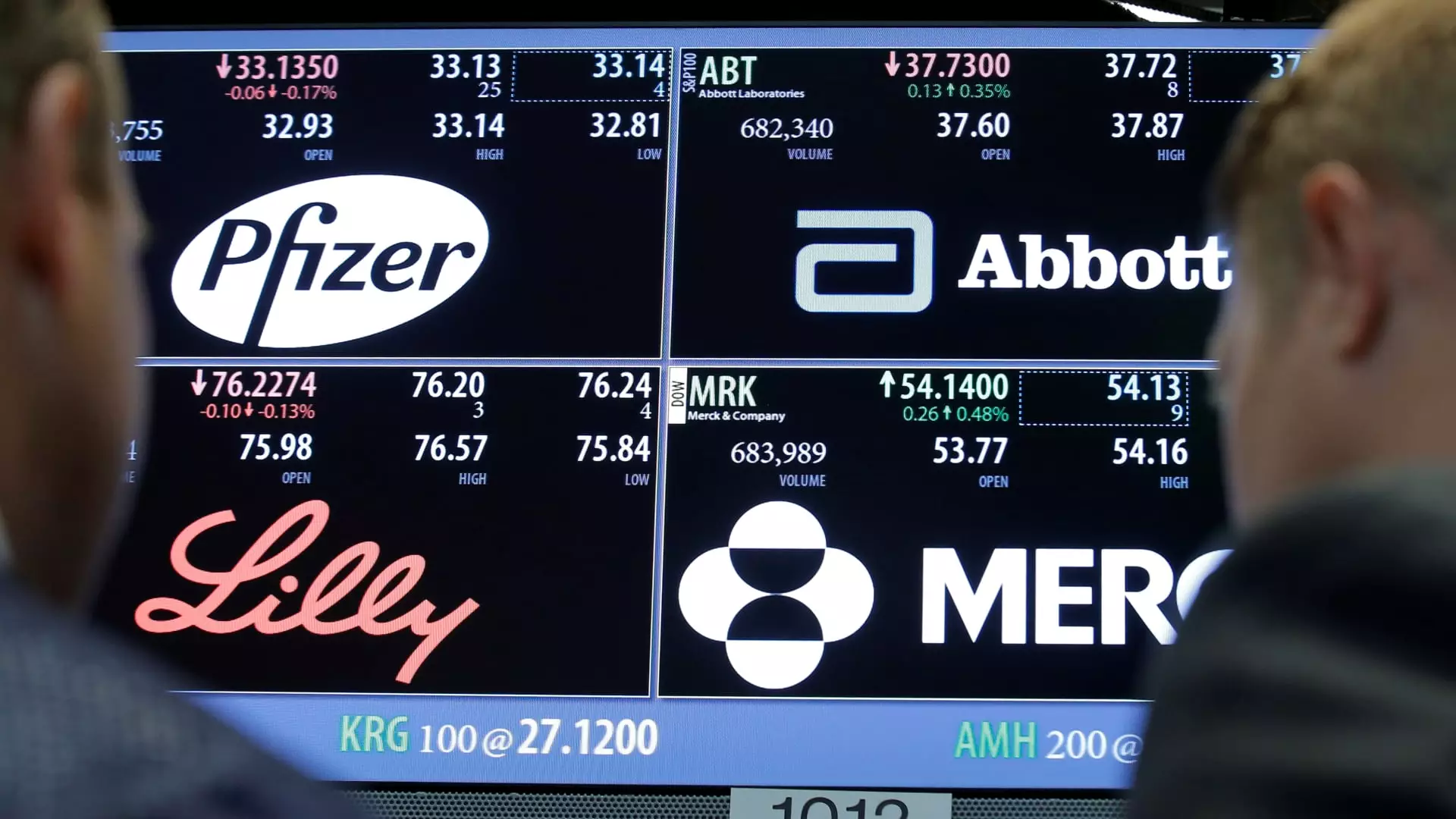Investing in Biopharmaceuticals: A Sector Poised for Transformation

In the current unpredictable market landscape, investors frequently grapple with determining which sectors are undervalued and hold the promise of significant returns. The biopharmaceutical sector stands out as a compelling candidate deserving of investors’ attention. While many investors remain wary, primarily due to a prolonged period of underperformance, a closer examination reveals that companies within this sector possess multiple fundamental strengths, potentially offering considerable upside over the next several years.
Distinctly set apart from the notable growth of companies like Eli Lilly and Novo Nordisk—which reaped incredible benefits from their blockbuster GLP-1 obesity medications—the broader landscape of biopharmaceuticals is teeming with opportunities that are, at present, misunderstood by many market participants. The hesitancy surrounding investments in this field appears rooted in concerns stemming from patent expirations, a lack of innovative pipeline drugs, and looming price controls. However, beneath this pessimism lies a gold mine of possibilities worth exploring further.
One of the most striking aspects of the biopharmaceutical sector is its profitability. With the average EBITDA margin hovering around 38%, it significantly outpaces the 31% average found in the larger S&P 500. Such profit margins indicate a robust capacity for sustaining earnings, particularly given the challenges presented by increasing market competition and regulatory scrutiny. Furthermore, the average net profit margin for biopharma stands at 24%, significantly exceeding the S&P 500’s 17.2%. High profitability provides a solid foundation upon which these companies can navigate turbulent market conditions.
Valuation metrics are similarly appealing, with biopharmaceutical stocks currently trading at an average price-to-earnings (P/E) ratio of 12.7. In stark contrast, the broader index commands a higher P/E ratio of 20.6. This disparity raises an important question: Is the market undervaluing the potential of established pharmaceutical companies? It’s vital to recognize that while low valuations can sometimes mask underlying problems, they can also represent mispriced assets poised for recovery.
While the biopharmaceutical sector has a rich history of groundbreaking developments—ranging from therapies for chronic conditions to advancements in oncology—the daunting challenge remains: Can this sector overcome the stagnation that beset it over the last two decades? Prolific research initiatives have led to the development of revolutionary treatments in the past, but the landscape has become increasingly complex. Experts suggest that the once readily accessible medical ‘low-hanging fruit’ has already been harvested, leaving tough, complex diseases as the next hurdle.
Current research pipelines are filled with ambitious goals, targeting perplexing conditions like Alzheimer’s and Parkinson’s disease. As investors, the patience for results must increase to accommodate the lengthy and costly drug development processes. With an average timeline of 10 years and associated research costs reaching billions, the strain mounted on the industry is palpable. Nonetheless, within this adversity lies a rich ground for innovation.
As the biopharmaceutical landscape grapples with challenges, the infusion of artificial intelligence (AI) could be a transformative force in the sector. Traditional methods struggle with time efficiency and quality data, yet AI offers the potential to address these limitations. Increasingly, analysts and scientists speculate that AI could help revolutionize drug development by identifying suitable patient profiles for clinical trials and streamlining the data analysis process.
For instance, Pfizer’s successful implementation of AI during the development of its COVID-19 vaccine exemplifies how technology can enhance efficacy and efficiency. With innovations like the AlphaFold program—capable of predicting molecular structures based on protein sequences—the future for drug discovery looks promising. By sifting through extensive datasets, researchers can unveil patterns previously obscured, thereby identifying new compounds that might effectively target existing diseases and conditions.
As stocks within the biopharma sector appear unfashionable to many investors, the underlying characteristics—high profitability, attractive valuations, and the potential for AI-driven innovation—paint a picture of a sector ripe for investment. Many leading companies in this space, including Merck, Pfizer, Bristol Myers Squibb, and Amgen, boast solid fundamentals and metrics worth consideration.
For investors willing to look beyond the prevailing skepticism and seek out opportunities, constructing a well-rounded portfolio augmented with biopharmaceutical stocks may prove to be a strategic move. Owing to its potential to weather tumultuous market conditions and exploit the transformative power of AI in drug discovery, the biopharmaceutical sector stands out as a compelling avenue for investment exploration and future growth.





